Stimulation of labor is a method of artificially invoking childbirth used on different terms of pregnancy. The reason for the stimulation of labor can be a postponed pregnancy, as well as the need to strengthen generic activity directly in the process of delivery in case of its weakness. These activities can be used if there are complications in childbirth, when the duration of the birth of the baby increases unnecessarily due to elongation .
So what is artificial stimulation of childbirth? When is it required? Why is there any delay in labor? Is it possible to independently cause labor, or the stimulation of labor must take place exclusively in the hospital? Is drug stimulation of labor activity safe for the mother and child, or is it better to prefer.
____________________________

· When are labor stimulation measures necessary?
Not every “delay in labor” requires stimulation, so doctors must carefully analyze the situation to find out the causes of what is happening and act in accordance with them.
The medical indications for using medication methods to stimulate labor are the following:
1. true postponed pregnancy, especially when detecting pathological changes in the placenta or signs of abnormalities in the fetus;
2. discharge of water in a pregnant woman ahead of time, due to the high risk of infection to the fetus through the open cervix;
3. premature detachment of the placenta, which is a direct threat to the life of the child;
4. in some cases, late toxicosis;
5. certain diseases of the pregnant, for example, severe diabetes and so on.
If the time to give birth came up, and the baby is in no hurry to be born and the birth does not begin as all, the pregnant woman may be tempted to use. A prerequisite for this is the absence of pathologies and the consent of the doctor! Of course, it can be exclusively natural doctor-approved labor stimulation, not medication - generic drugs can be used only in a hospital, and only under medical supervision.
· Stimulation of labor during prolonged pregnancy

Pregnancy lasts 40 weeks, after which the baby should be born. Nevertheless, the onset of 40 weeks is not always preceded by childbirth, often women "perenash" the due date. According to statistics, up to the 42nd week "fall short" of 10% of pregnant women. Despite the obvious postponement of the process, this is not necessarily a postponed pregnancy - in 70% of cases, this is a banal error in stating the timing, that is, the estimated date of delivery is not calculated correctly. It is possible that in reality everything goes according to the schedule set by nature.
At the same time, blindly rely on the fact that the error crept into the calculations is not worth it. Truly postponed pregnancy bears a serious danger to both mother and baby. In order not to miss a real pererashivanie requires constant medical supervision. For this use Ultrasonography of the child with doppler, constantly monitor his pulse. In addition, the recommended amnioscopy - examination of the fetal bladder with a special medical device amnioscope, which is inserted into the cervical canal of a pregnant woman. This method makes it possible to determine whether meconium (the original feces of the infant) is present in the amniotic fluid, to assess the insufficient amount of amniotic fluid, the insufficiency or absence of fetal cheese-like lubricant, to detect detachment from the uterine walls of the lower membranes of the membranes of the membranes.
These survey methods allow you to take correct solution on the possibility of further development of pregnancy, to carry out natural childbirth or use measures to stimulate childbirth, including generic drugs. Sometimes the delay in childbirth is simply the psychological setting of a pregnant woman: for example, Mom is determined to give birth to the baby when the husband goes on vacation, or to please the heiress of the spouse for his birthday. In such cases, as a rule, a rather serious conversation with the mother - a kind of natural stimulation of childbirth - and then everything goes "like clockwork".
There are a number of medical indicators by which it is judged that this is really a postponed pregnancy:
1. the absence of "front waters", which should envelop the head of the baby;
2. a sharp decrease in the volume of amniotic fluid;
3. turbidity of amniotic fluid, contamination of their feces meconium of the child;
4. in amniotic fluid there are no flakes of fetal cheese-like lubricant;
5. child’s too strong cranial bones;
6. immature cervix;
7. there are signs of aging placenta.
If these symptoms are confirmed, the obstetrician will suggest an artificial drug stimulation of labor or a cesarean section.
Prolonged pregnancy itself provokes complications in childbirth, there is a threat of bleeding, weakness of labor, acute hypoxia of the fetus, which among other things have serious consequences. Monitoring the state of the baby is mandatory, given the danger of aging of the placenta. The result of this process is a significant deterioration of the placental blood flow, and nutrients to the baby come in smaller quantities. In addition, the production of amniotic fluid decreases with time. All this is extremely undesirable for the health and development of the baby. If the ultrasound scan shows thinning and deformation of the placenta, the pregnant woman must be prescribed hormone therapy, which helps to bring about the onset of labor and induce labor.
One of the symptoms of the fact that there is a real delay in childbirth is a decrease in the amount of amniotic fluid; a pregnant woman stops gaining weight as a result of this, or even loses weight. Additionally, the postponed pregnancy is confirmed by reduced or, on the contrary, increased fetal activity, due to lack of oxygen as a result of improper circulation in the uterus.
If the postponed pregnancy is confirmed by appropriate examinations, artificial stimulation of labor is prescribed by a doctor. The worn-out babies look somewhat painful after birth: they are thin, but they are hyperactive, the skin of the worn-out babies is wrinkled, scaly and dry, and does not have a layer of fruit grease. The eyes of the "sat up" kids are open, the nails and hairs are long. The umbilical cord has a yellowish or even greenish tint, indicating the beginning of purulent processes.
· Signs of the need to trigger or strengthen labor
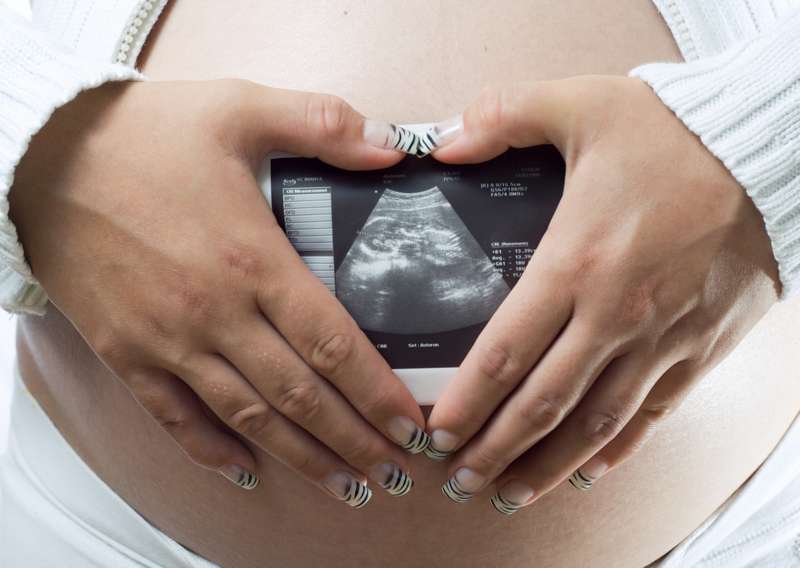
The doctor, watching how childbirth proceeds, pays close attention to the following signs indicating the need for third-party intervention in the process in order to induce, or strengthen labor activity:
1. Determining the presence or absence of contractions, their frequency, strength and duration. Palpation of the uterus (abdomen), results of indications of the tokenometer, a device that accurately records the frequency and duration of contractions, and a special intrauterine catheter, which determines intrauterine pressure against contractions (rarely used in practice), can reliably assess these signs.
2. The presence and speed of cervical dilatation. This criterion most accurately determines the normal course of the generic process. In general, cervical dilatation is measured in centimeters. The minimum disclosure is “zero”, that is, 0 cm with the neck closed, the maximum is 10 cm, that is, the uterus is fully opened. However, even this indicator is not considered absolutely reliable, since the measurement is made, so to speak, "by eye". In this regard, the obtained values of disclosure can vary even from the same obstetrician, not to mention the examinations of the woman by different doctors. The fact is that the generally accepted guideline in determining the degree of disclosure is the width of the fingers of the obstetrician: 1 finger corresponds to approximately 2 cm, 4 fingers is 8 cm, and so on. The normal rate of opening, corresponding to the active phase of labor is 1–1.5 cm per hour. In the case of a slower process, may begin to apply some methods of stimulation of labor. But the actions of doctors aimed at strengthening labor activity are based not only on the degree of cervical dilatation, but also on the state of the woman in labor.
3. Promotion of the presenting part of the infant (heads at ). Promotion or omission of the fetus is determined by palpation of the abdomen of the woman and / or with the help of vaginal examination.
If the woman has a normal pelvic size, the intrauterine device correct (position down head), the factors that prevent the birth of the baby by natural birth canal, are missing, then the reason for the delay in childbirth can be:
1. mother's fear of pain;
2. sedatives;
3. painkillers;
4. position of women in childbirth on the back;
5. certain diseases of pregnant women;
6. confusion of the woman in labor.
· Stimulation of labor or cesarean section?

It should be noted that drug stimulation of labor activity is used more and more from year to year. If you consider it unacceptable to use medicinal generic drugs, discuss this with your doctor knowingly that this drug-induced stimulation of childbirth is used only when absolutely necessary. It should be discussed with the doctor also because each maternity hospital has its own “favorite” ways of stimulating childbirth — find out in advance.
So, what are the methods of stimulation of labor? Formally, artificial stimulation of labor activity is divided into two main groups:
1. methods and drugs that stimulate cervical dilatation;
2. methods and drugs that affect the contractility of the uterus of a pregnant woman.
In addition, sometimes use sedatives, as measures to stimulate childbirth. Often the feeling of fear of pain in childbirth, can slow down the labor activity. Muting negative emotions can restore the natural course of labor and strengthen the clan activity to normal.
The need for a caesarean section is due to the fact that the post-babies have a rather large head and the babies themselves are too large to be born. naturally. Such babies, while in the womb, do not receive sufficient nutrition and oxygen. In addition, there is a high risk that the baby will take the original feces into the respiratory and digestive tracts, which is not safe for his health.
Artificial stimulation of labor or cesarean section will be applied in any case when:
1. The woman has hypertension or diabetes mellitus;
2. Amniotic fluid has a green tint, as a result of the presence of original feces in it;
3. Fetal growth slowed down significantly.
· Artificial stimulation of labor, action on uterine contractile activity
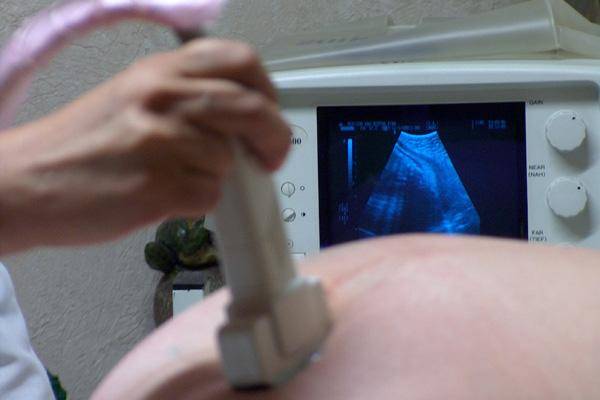
Especially popular among obstetricians in this group of means of artificial stimulation of labor activity are the following:
1. amniotomy - the opening of the membranes of the fetus operatively ;
2. reception of synthetic analogues of natural hormones (most often, oxytocin or prostagladins) .
Both tools have a number of strict indications, risks of use and consequences. Therefore, the decision on each case is made individually, according to the situation.
- Read more about this method of delivery, such as amniotomy, read the article:
- Read more about hormonal stimulation of labor and the use of the drug oxytocin in the article:
· Stimulation of labor, action on the cervix
The reason for the delay of labor or their slow progress is often the so-called resistance, immaturity of the uterus, or more simply, the unpreparedness of the cervix to the disclosure. The most common method to help the uterus "ripen" and thus cause generic activity, is the use of, in the form of tablets, intravenous solutions, gels, suppositories for local use and other forms of the drug.
· Herbal preparations for the induction of labor
In fact, there are many means and drugs that can enhance labor activity, but most of them are rarely used during labor. As a rule, their use is considered justified in combating postpartum hemorrhage due to uterine hypotension - an insufficient contraction of the uterus. These remedies include herbal preparations:
1. ergot
2. common barberry,
3. shepherd's grass bag,
4. nettles,
5. drug spherophysin, etc.
In recent years, many generic drugs have lost their positions: artificially synthesized hormones estrogens, whose effectiveness, as it turned out, are much lower than that, act as a vivid example. There are also not fully explored. unconventional methods stimulation of labor, for example, acupuncture.
Unfortunately, today there is no way that would suit both physicians and patients equally. Therefore, the final choice of the method of stimulation of labor remains for the obstetrician, who will make a decision taking into account the current situation, the conditions of the pregnancy, and the individual characteristics of the woman.
· Methods of natural stimulation of labor
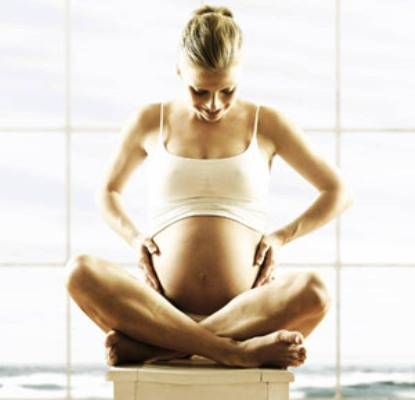
A woman can also help herself, bring the date of the birth of the baby into the world in a natural way and cause or enhance labor activity if necessary. Moderate physical activity during pregnancy, physical exercise to strengthen the abdominal muscles, the muscles of the perineum, the ability to relax, yoga, breathing exercises - all this is natural stimulation of childbirth.
Significant assistance in childbirth is provided by knowledge of the correct behavior in childbirth, about the very, which will reduce the fear that interferes with the parturient woman to adequately influence the process of the appearance of the baby. The knowledge and skills gained in training courses are highly effective natural stimulation of labor.
If possible, userather often they are no less effective than medical ones, and besides, they have no side effects, like drug stimulation of labor activity.
And most importantly, keep calm and self-reliance - this is already 90% guarantee that the meeting with your baby will be quick and cloudless! Easy childbirth!
Yana Lagidna, especially for Mymom . ru
And a little more about what can cause or strengthen the generic activity:
In this article:
When the pregnancy has reached the end of its time, and the birth has not yet taken place, or the birth activity is too weak, there is a need for stimulation of the labor. Stimulation of labor - a natural or artificial acceleration of the activation of labor through the introduction of medicines or some procedures.
Indications for stimulating labor
Stimulation of labor is applied in the case when a woman cannot give birth on her own due to the presence of such factors: overweight of the fetus or mother, the presence of some serious diseases in the history (diabetes mellitus), placental abruption, early discharge of amniotic fluid, etc.
Obligatory stimulation of labor is carried out with placental abruption, when there is a likelihood of bleeding and the life of the fetus is threatened. Stimulate generic activity when the pregnancy is postponed, and childbirth does not occur. Rare irregular contractions or their complete cessation, cases when a woman is completely exhausted after contractions is also a reason to stimulate childbirth. Large-scale and polyhydramnios is an indication for artificial stimulation, since in such a case the birth may be delayed, and there is a likelihood of hypoxia in the fetus.
Artificial methods of labor induction
During childbirth, the doctor observes how the labor activity progresses: palpating the woman's abdomen, determines the frequency and number of contractions, their duration. The most accurate indicator is the disclosure of the cervix. If the cervix dilates too slowly or the opening has ceased, then, if necessary, labor is stimulated.
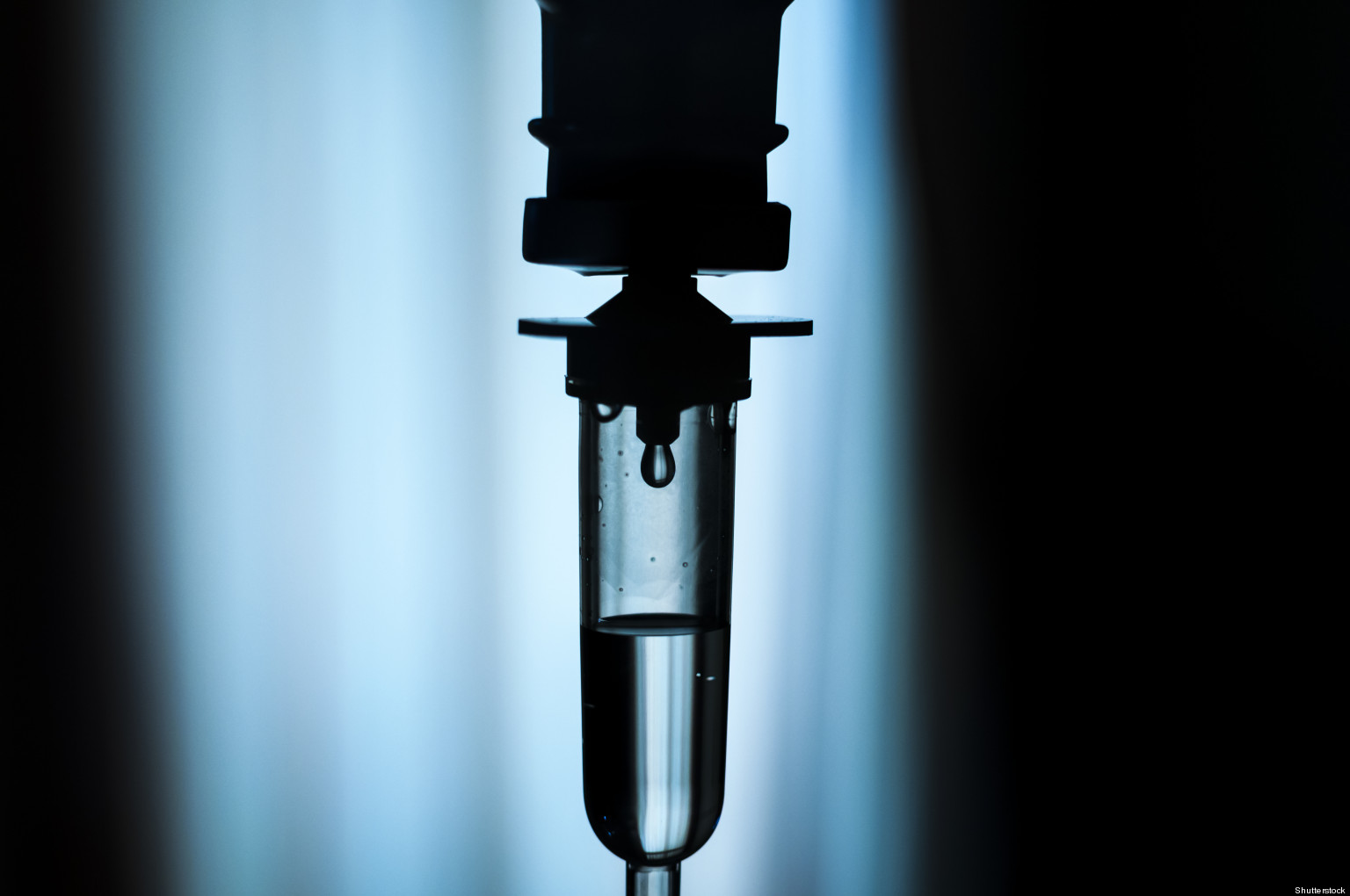
Stimulation of labor can be carried out using:
- oxytocin;
- prostaglandins (gel, candles);
- amniotomy;
- mifepristone, pencrofton, miropriston.
Oxytocin
To open the cervix, hormonal analogues are used to promote the opening and maturation of the cervix. The most effective and common drug is oxytocin. It refers to the method of artificially stimulating labor by intravenous administration. It is used for weak labor, as a stimulation of lactation, as a means for postpartum hemorrhage.
There are some contraindications against the use of oxytocin. So, it can not be appointed if a woman has a very narrow pelvis or there is an anomaly of the fetus. There is also the possibility of overdose or side effects due to inaccuracies in dosage. As a side effect, excessive contractions of the cervix may appear, leading to impaired blood circulation and fetal hypoxia. Bleeding may develop.
Prostaglandins
Prostaglandins are used in medical practice as a means to stimulate labor and delivery. They are prescribed in cases where the cervix is not ready for disclosure. Normally, prostaglandins are found in the amniotic fluid, and in small quantities in the tissues of the body.
It is considered the safest to use the anti-stimulant in the form of a gel or a candle - this method is the most gentle and effective. Gel for stimulation of labor, which consists of prostaglandins, helps to improve hormones and prepare the cervix for opening and childbirth. Generic activity occurs within 4 hours after administration of the gel. Under the action of oxytocin, cervical contraction is stimulated, pain is alleviated.
A gel is inserted vaginally with a sterile syringe into the back wall of the vagina. After that, the woman must lie down to avoid leakage of the gel out. If you enter the gel directly into the cervix, there is a possibility of overstimulation of labor. In the absence of the proper effect, after 6 hours, the gel is reapplied. The maximum dose of the injected gel is no more than 3 ml in total.
Although gel, as a generic accelerator, it has good feedbackHowever, there are a number of contraindications to the use of this gel. These include the presentation of the fetus, clinically narrow pelvis in a woman, the presence of indications for cesarean section.
Amniotomy
Folk stimulation methods
TO folk methods Stimulation of childbirth includes such means as castor oil (castor oil), champagne, use of kelp, etc.
Castor oil
Stimulation of childbirth at home can be carried out with the help of an oil such as castorca. Castor oil, due to its relaxing effect, can lead to the opening of the cervix and bring birth closer if taken in large quantities. To stimulate labor, you need to drink 1 tablespoon of castor oil. But still, modern medicine is against a drug like castorca, because castor oil can cause diarrhea and lead to dehydration (castor oil is also used as a laxative).
Castor oil is not considered a good and suitable means to stimulate childbirth. Can be used to stimulate childbirth more sparing and more effective methods than castorca or castor oil.
Laminaria
It is possible to bring the process of childbirth in the home in a natural way with the help of a special diet, which includes foods rich in fiber. In this sense, sea kale is very good (or in another way kelp). Laminaria contains a large amount of iodine. And the vitamins and elements contained in kelp are not inferior to expensive vitamin preparations. To provide a relaxing effect enough to eat a little kelp, and it will have a stimulating effect on the body.
Laminaria for obstetrics is used not only at home in official medicine. In order to use kelp conveniently, they are formed into sticks of 6–9 cm long. Laminaria absorbs moisture well, therefore, when placed in the vagina, the cervical canal expands. In addition, it is believed that kelp contribute to the development of prostaglandin, which expands and softens the cervical canal.
Laminaria used in two stages: first, enter 6 sticks for 16 hours, and if the birth did not start, then these sticks are removed and injected for the next 16 hours, another 6-12 sticks.
Alcohol
It is believed that taking a small dose of alcohol has a relaxing effect on the body and leads to a natural acceleration of labor. This is partly the case. For example, if you drink some red wine it will not harm the baby and will help bring the contractions closer. It is not recommended to take champagne. Champagne does not have the necessary effect on the body and can only harm. Therefore, doctors are against this method.
Useful video
The appearance of the baby is a long-awaited moment for any mother. This process does not always go smoothly, so you need to be prepared for minor complications. Fortunately, medicine does not stand still. Even if the child is in no hurry to be born at the appointed time from 38 to 42 weeks, there is a way out. In this case, doctors often decide to stimulate childbirth.
Specialists decide on the stimulation of labor activity in the presence of certain indications that threaten the life of the baby. Among them are the following:
- postponed pregnancy (between 41 and 42 weeks);
- strong stretching of the size of the uterus due to multiple pregnancy or polyhydramnios;
- diabetes, heart disease of various nature, renal failure in chronic or exacerbated forms that threaten the life of a woman and a child;
- no contractions more than 12 hours after the discharge of fetal waters.
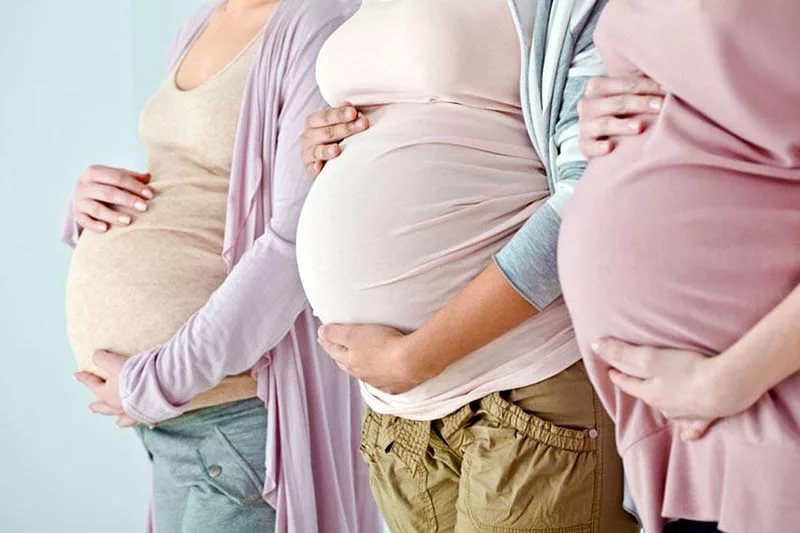
What is dangerous stimulation?
Stimulation of childbirth often saves the life of both mother and child. But this procedure often carries difficulties and inconveniences. What is the danger of stimulation of labor and is it harmful for a child?
- Artificial contractions are much more painful than natural ones. In this regard, mothers often require painkillers, which is not recommended during childbirth.
- The next inconvenience is the situation in which a woman has to be during labor. Drugs that stimulate generic activity, are introduced through the drip. This causes the woman in labor to lie only on his back, which is extremely inconvenient in the process of childbirth.
- Increased risk of caesarean section.
- And the most dangerous is the oxygen starvation of the baby caused by active contractions of the uterus. Fortunately, such cases are rare, but the risk of developing a similar situation is still there.
Prolonged pregnancy is a significant reason for immediate induction of labor. Normal births begin from 38 to 41 weeks, and more than 42 weeks in medical practice are considered to be postponed. The danger of this process is the aging of the placenta because of which its functioning is reduced. For a child, it threatens oxygen starvation.
What is the term stimulate childbirth? If the natural labor activity did not start between 41 and 42 weeks, the doctors make a decision on the urgent stimulation of labor.
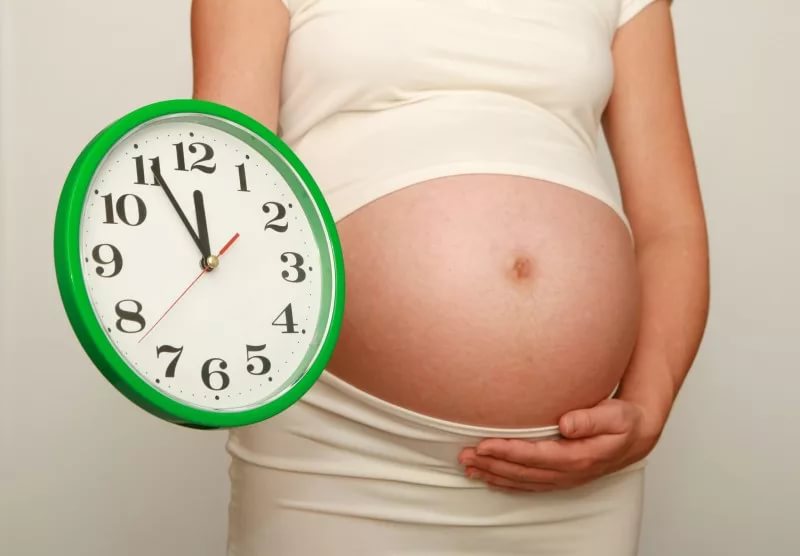
Artificial stimulation of labor
Obstetricians can provoke contractions under certain indications even before the onset of labor, as well as during the birth process to activate them. In practice, medicine uses four methods of artificially stimulating labor:
- the use of prostaglandins;
- autopsy of the amniotic bubble (amniotomy);
- department gestational egg;
- taking oxytocin.
How is labor stimulated?
During amniotomy, an obstetrician-gynecologist inserts a hook through the cervix, piercing the fetal bladder. This causes the discharge of water. The head of the baby rests on the pelvic bones, revealing the cervix. This provokes generic activity. Doctors recommend using this method only for multiparous women.
Prostaglandins are hormones in the form of a gel, suppositories or tablets. Generic activity usually begins 3-4 hours after the application of funds. If this does not happen, the drug is injected into the vagina after 6-12 hours. Prostaglandins open the neck, causing the uterus to contract.
Oxytocin is an artificial analogue of the hormone in the form of injections for intravenous administration. The drug is potent, therefore, has a number of side effects. Oxytocin is administered by doctors through an IV drip in certain doses until regular contractions are achieved.

After the start of stimulation, the baby's heartbeat is established by constant monitoring. After the activation of the generic activity, the introduction of funds is terminated.
Separation of the ovum. This method consists in the following: the doctor, penetrating into the neck with a finger, with massage movements separates the fetal membranes from the walls of the uterus. The procedure is allowed to perform only for a period longer than 40 weeks.
Artificial stimulation of labor takes place carefully under the constant supervision of specialists, observing the state of the woman in labor and the child. Doctors achieve results in 1 fight in 5 minutes.
If after 4 hours after the procedure, the labor activity has not started, a cesarean section is performed.
Grounds for artificial stimulation of labor
The decision on artificial stimulation of labor activity is taken by the gynecologist even before the expected date of birth in the case of the birth of chronic pathologies of the heart and kidneys, diabetes. If, when examined by a doctor or during an ultrasound scan, polyhydramide was detected, artificial stimulation of labor is used in every second case. When multiple pregnancies occur with complications, the procedure is also inevitable.
The absence of contractions for more than 12 hours after the discharge of water, postponed pregnancy is a good reason for immediate stimulation of labor.

Alternative ways to stimulate childbirth
Many women in labor, learning about the need for artificial stimulation of labor, are looking for alternative ways that do not require medical intervention. The effectiveness of such methods is somewhat lower, but there is a chance to achieve natural childbirth on their own. These methods include:
- sexual intercourse;
- bath with aromatic oils;
- breast massage;
- therapeutic measures;
- castor oil;
- herbs, provoking contractions.
The onset of labor with artificial stimulation
Generic activity, depending on the method of stimulation chosen by the doctor, begins in different ways.
The separation of the membranes is carried out only when the cervix is open. The midwife, inserting a finger into the vagina, separates the fetal membrane from the uterine wall. Most women then leave the water and under the influence of prostaglandin contractions begin.
Almost all methods of artificial stimulation of labor are carried out with an open cervix. If the uterus does not open naturally, use drugs containing prostaglandins. Some women have enough of a single use of the remedy to start a natural labor activity. If, after 24 hours, labor has not begun, experts resort to other methods of stimulation.

The puncture of the amniotic sac by the obstetrician imitates the natural process of childbirth, when the waters flow independently. If a day after the discharge of water, the contractions do not begin, the doctor artificially stimulates labor with oxytocin to minimize the risk of infection.
If an insufficient amount of oxytocin is secreted in the woman's labor, the doctor injects drugs that stimulate this process. In medical practice, Pitocin is often used for such purposes. Usually this drug acts half an hour after application. At this time, the obstetrician carefully monitors the reaction to the introduction of the drug, if necessary increases the dose of Pitocin.
Methods of stimulation of labor
Ways to stimulate childbirth conditionally divided into:
- Artificial (use of prostaglandins, amniotomy, separation of the amniotic bubble, use of oxytocin);
- Natural (drinking castor oil, sexual intercourse, increased physical activity, stimulating bath, the use of special herbs, additional therapeutic measures, breast massage).
Every woman has the right to choose when she needs labor stimulation and by what method. However, it is necessary to ask a specialist for advice!
Childbirth cannot start, stimulation is needed
Expectant mothers, being on the 38-40 week of pregnancy, are often interested in: is it possible to stimulate childbirth on your own at home without the use of medications and medical intervention? Can! For this fit natural methods stimulation of labor. If the method does not work, doctors use artificial stimulation of labor.
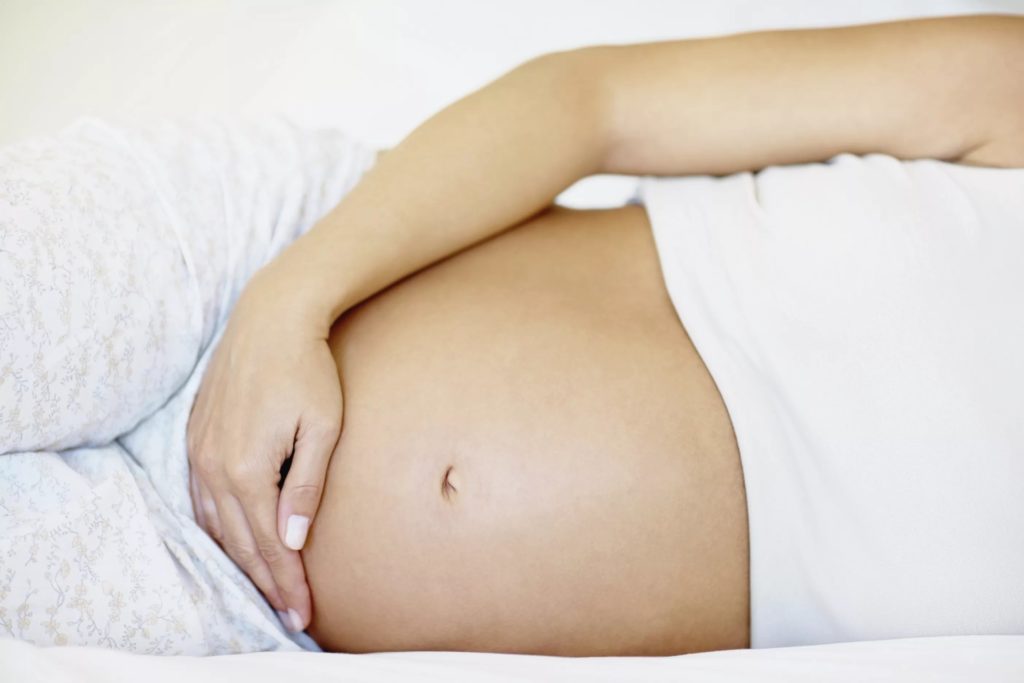
Artificial opening of the fetal bladder - painless, but unpleasant way to stimulate childbirth. The method is one of the most popular types of induction of labor without using medication and consists in puncturing the amniotic bubble, which entails the discharge of water.
Oxytocin - a way to stimulate childbirth. The drug is an artificial analogue of the hormone that causes contractions. Introduced maternity intravenously to achieve regular contractions.
Sexual intercourse. Male sperm contains prostaglandins. The amount of the hormone in it is not as great as in medical preparations, however, with a normal pregnancy, this hormone content will be quite enough for the timely onset of labor. During sexual intercourse in the body of a woman, oxytocin is produced, which causes the onset of contractions.
Department of the ovum - at the moment a bit outdated way. He was actively used to stimulate labor activity several decades ago. Now the method is rarely used, because the procedure itself is painful, and it can also cause bleeding in the woman.
Stimulation of the nipples. This method against the background of excitement of a woman causes a surge of oxytocin into the blood. The main disadvantage of this method is the duration of the conduct. Massage the nipples should be done 3 times a day for 15-20 minutes on average. Not every woman can endure this, it is especially difficult for owners of sensitive breasts.
Long walks, mopping or walking upstairs are common ways to induce labor. During long and active movements future mom in late pregnancy, the baby begins to put pressure on the cervix. Often this provokes the onset of labor.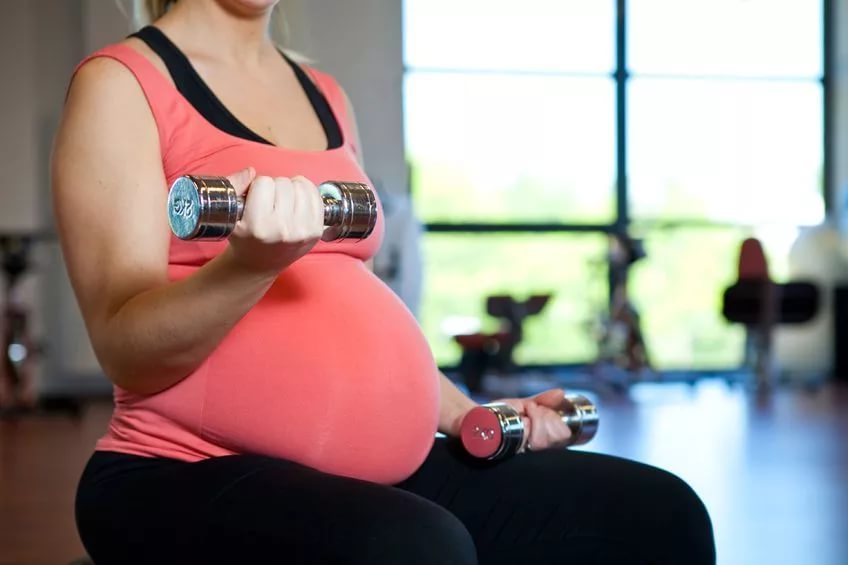
Additional therapeutic measures. Massaging certain areas is another way to stimulate childbirth. Many women choose this method, because it is both useful and pleasant. However, as practice shows, this method is less effective in stimulating labor activity than the others.
The use of herbs that cause contractions. For this method is preparing a decoction consisting of spicy herbs - cinnamon, ginger, cloves. Tampons are soaked with ready infusion and inserted into the vagina. Use a similar method is possible only with mature pharynx. In the opposite case, intensive contractions of the uterus caused by herbs will lead to oxygen starvation baby
Stimulating bath. To provoke the onset of contractions can help a warm bath with the addition of aromatic oils. For the procedure, a mixture of 250 ml of cream and 5 drops of essential oils (clove, ginger, cinnamon) is added to water at a temperature of no more than 40 degrees. You need to take a bath for 30 minutes.
Castor oil. Castorhea causes intestinal spasms, which entails uterine contractions. To stimulate labor, castor oil in pure or diluted form is taken orally. At one time you need to drink 50 ml. After half an hour, severe diarrhea begins. This causes the onset of labor.
Stimulation of childbirth at home
Timely stimulation of labor at home will relieve the woman in labor from subsequent medical intervention in the hospital. Not all natural methods immediately help to cause contractions. The body of each woman is individual. Try on yourself several methods of stimulation in order to understand which method is right for you.
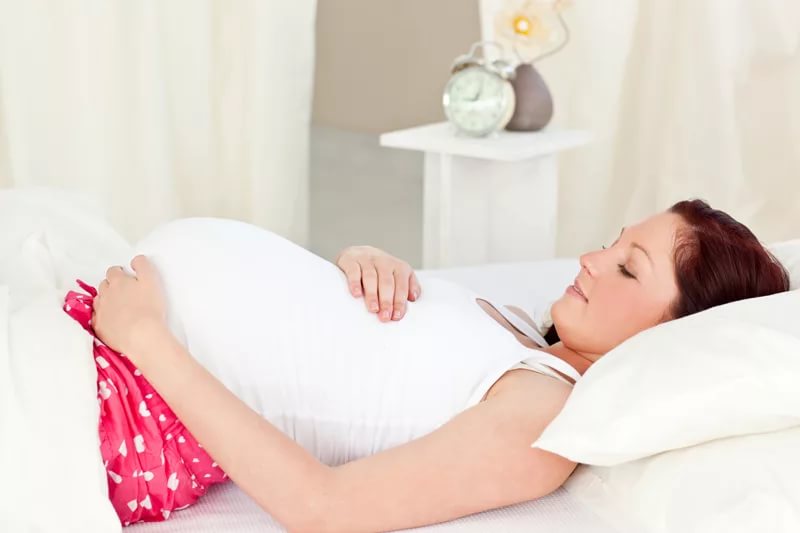
Stimulation of labor in the maternity hospital
Artificial stimulation of labor activity is valid in 100% of cases. But such methods are unsafe for both the woman in labor and the baby. However, do not be afraid of artificial stimulation of labor. Sometimes only she can save the life of you and your child. Before carrying out such a procedure, it is worth considering various methods, weigh the pros and cons, and, of course, consult a doctor.
Childbirth after stimulation
After artificial stimulation, labor contraction is more painful than with natural childbirthand last longer than 1 minute.
Breathing exercises will help reduce pain sensations. Otherwise, the birth of a baby after stimulation is no different from natural birth.
Natural stimulation of labor
Natural stimulation of labor can be practiced only after consultation with a specialist. The most effective methods include sexual intercourse and intake of castor oil. Do not be discouraged, if suddenly these methods did not help. After all, there is drug stimulation, after which the baby will definitely be born on time.
Article by Sarah Wickham, translated by Catherine Zhytomyr. Printed in AIMS magazine (AIMS - Alliance for the Improvement of Maternity Services - British public organization “Union for the Improvement of Obstetrics Services”) AIMS JOURNAL Vol: 26 No: 2 2014 6-8
In modern Western culture, most women know about the induction of labor even before they become pregnant.
They know that stimulation is offered if it is considered that it will be safer for a child to be born than to remain in the womb. I also suspect that many women know that one of the main reasons for prescribing stimulation is the duration of pregnancy, after which the child is considered “postponed.” Also, many women know some other women who have been stimulated to give birth, so they know other stated causes of stimulation. These reasons may be a woman’s age, if it is higher than “normal”, and premature rupture of water, and / or health problems, as well as complications of pregnancy, during which birth stimulation may be necessary
But that's not all. There are many other aspects to the decision whether or not to agree on the stimulation of childbirth, which I also have to take into account. I spent the last few months studying this topic. The result was a recent edition (revised and updated) of my book, Stimulation of Childbirth: Making an Informed Decision (Wickham S (2014) Inducing Labor: making an informed decision. AIMS, London). In May, for the presentation of this book in Bristol, I prepared a presentation entitled “10 facts about birth stimulation that every woman should know.” I was not going to dwell on well-known things (see above), instead I wanted to draw your attention to some facts, circumstances and assumptions that are less known and which it may be worthwhile to take into account when we make a decision on stimulation. In fact, of course, it is worth knowing much more, therefore my list of ten facts is just a launching pad for discussion, and not exhaustive information on the issue.
1. It does not look like normal childbirth.
This is clear to some, but I know from experience that not everyone. Stimulated labor is very different from childbirth, which began spontaneously. Of course, personal experience each woman has her own birth, but there are differences that are almost universal. First, to stimulate labor, a synthetic hormone is administered to a woman, which causes more severe painthan in spontaneous birth. And this pain comes faster. Synthetic hormones, unlike our own hormones, do not cause the release of painkillers into the blood, which during normal delivery are produced by the female body. In addition, stimulation can have side effects, which means that such a woman will be observed more closely. Such a closer observation can limit the mobility of a woman, which increases tension and, consequently, pain, and this, in turn, can cause the woman to feel that the situation is out of control.
2. It hurts
I have already started talking about this in paragraph 1, but there are also other sources of pain, which, I believe, women should be aware of before making a decision. For example, contractions caused by a prostaglandin gel or balloon, which are often used in the first stage of labor stimulation, can quickly become painful in the absence of any visible effect. It gives a negative experience of childbirth, moreover, in such a situation it is easy to get tired and / or lose the presence of mind much earlier than on early stage spontaneous birth. The contractions caused by oxytocin can also be very strong, and often the woman has less time to adapt to them than in spontaneous labor. More frequent vaginal examinations and other manipulations (for example, using a balloon) can cause additional pain.
3. "The service is in the package"
I wrote a lot about this on my website (), so I will not particularly repeat myself. But the fact that they continue to ask me whether physiological management of the third period (birth of the placenta), as well as refusal from CTG and / or vaginal examination is possible in case the birth was stimulated, makes me think that this is not a well-known fact. Not that anyone wants to prevent a woman from accepting the right decision. But the drugs that are used to stimulate labor are powerful enough. They block the release of their own hormones, and this can cause problems for a woman and a child. And the effect of these drugs, stimulating childbirth, must be assessed, controlled and, if necessary, compensated. If a woman believes that such side effects of stimulation are not what she needs, then perhaps it is better to ask yourself if this stimulation is needed at all.
4. Deposition of fetal membranes is not so harmless.
Nowadays, in many places, it is customary at some period of pregnancy to offer women to “peel off” or “manually separate” the membranes in the hope that this will reduce the number of women in need of drug stimulation. Even if we ignore the assumption that all women who are offered stimulation will agree with her, we must understand that the separation of the membrane can cause discomfort, bleeding and irregular contractions, while according to some studies, this procedure accelerates the onset of labor by only 24 hours . The authors of a review published on Cochrane conclude: “It does not seem like the routine use of manual sheath removal from 38 weeks gives significant clinical benefits. Carrying out this manipulation to stimulate childbirth should be considered along with the discomfort of the woman and others. side effects procedures ”(Voulvain M, Stan CM, Irion O (2005) Membrane sweeping for induction of labor. Cohrane Database of Systematic Reviews 2005, Issue I. Art. No .: CD00451. DOI: 10.1002 / 14651858.CD000451.pub2).
five. " Natural stimulation"Is an oxymoron
I also wrote about this in another place, and this article can be read on my website (Wickam S (2012) When is induction not induction? Essentially MIDRIS 3 (9): 50-51), but the basic idea is easy to state: either we we are waiting for the natural onset of labor, as it happens by natural laws, or we are trying to intervene and cause labor before they began. Sometimes there are good reasons for causing childbirth, but if a woman takes castor oil or asks her midwife to manually separate fetal membranes daily or chooses some other “popular” method of stimulation, then she is going to call her birth with non-drug means. Please note that I am not trying to say that there is something wrong here, but I believe that since we live in a culture that devalues women's bodily functions, it is important to clearly understand what our intentions are.
6. This is NOT a law
While I was writing the book, I was surprised to find out that the AIMS hotline received a call from a woman whose midwife said: “We have to stimulate you 24 hours after the discharge of water. This is the law. ”This woman agreed to stimulate childbirth, which turned out to be very traumatic for her. I want all women to know that there are no laws that define what a pregnant woman should or should not do. Both me and AIMS are very disturbing. Every medicaid claiming this should be reported to higher organizations. Any woman who is threatened in any way or simply declares something like that, we ask to contact AIMS for informational and other support.
7. This is not “just a drop”
I am always worried when I hear in the words of midwives or doctors underestimate the recommended intervention. Especially, I don’t like the expression “drop” or “help a little” used in relation to the intravenous drip of oxytocin. This is a powerful drug, and so it should be treated. It can cause fetal distress, and in some clinics it is generally accepted to increase the dose of oxytocin until the child responds with distress (!), And only then stop increasing the dose - it is considered that the proper level of oxytocin is determined. But even when the dose of oxytocin is no longer increased, as soon as effective contractions are established, this drug should be treated with attention, and professionals should not be underestimated, no matter whether it is intentional or not, its effect.
8. The female body will not fail. Stimulation and system - easily
The name speaks for itself. Stimulation does not always work, and the woman is not to blame. I would like to dissuade all women whose births unsuccessfully stimulated that everything is in order with them and with their bodies. This is another case where some of the expressions used in the generic block are clearly worth reconsidering.
9. Risks of delay come later, they are lower and more difficult to prevent.
Below I give the data that I use here and in the book. This is a summary of the results of a study that studies the risk of stillbirth at different stages of pregnancy. If you look at the values - and I especially ask you to compare the risks
at 37 and 42 weeks gestation, you will see that the increase in risk does not occur as early as many people think, and that the increase in risk is not as strong as it is often assumed. In fact, the outcome of childbirth in women who were expecting a spontaneous onset of labor and in women who gave birth with stimulation was so similar that no single study comparing childbirth with stimulation and spontaneous childbirth could demonstrate the benefit of stimulation. It was only when these studies were brought together that it became possible to notice small differences. However, the quality of one of the studies (just what pushed the scales) leaves much to be desired. On this basis, I would like to ask whether there is any real benefit from the current protocols offering the stimulation of labor after 40, but up to 42 weeks. The book on this topic says much more, including a full review of the literature on the topic.
Risk of stillbirth of unknown etiology
for a period of 35 weeks 1: 500
for a period of 36 weeks 1: 556
for a period of 37 weeks 1: 645
for a period of 38 weeks 1: 730
for a period of 39 weeks 1: 840
at 40 weeks 1: 926
for the period of 41 weeks 1: 826
for a period of 42 weeks 1: 769
for the period of 43 weeks 1: 633
Taken from Cotzias CS, Paterson-Brown S, Fisk NM (1999) Prospective risk of unexplained stillbirth in singleton pregnancies at term population based analysis. BMJ 1999; 319: 287. doi: dx.doi.org/10.1136/bmj.319.7205.287
10. Risks for old-aged people are not as certain as is commonly believed.
The final point refers to the statement that with an increase in the age of a woman, the risks increase, and therefore their birth should be stimulated. Indeed, some studies suggest a correlation between an increase in the age of the mother and an increase in the number of some complications, but there are several reasons for treating this data with caution. Older women are more likely to be examined and more likely to undergo various interventions, and this in itself can cause complications. "Older" women are more likely to have health problems, and it is difficult to say what is causing the complications - the woman’s health condition or her age. Studies that dealt with this problem do not always separate one from another, and in those studies where this was done, women participated who had given birth a long time ago and who could not be compared with today's women. Thus, in this area there is an extremely lack of material, and modern research on this topic, unfortunately, has only led to the fact that more and more young women are being stimulated and more early terms, so that the results of such studies, women also do not have much benefit.
A day or two after my report, I asked some colleagues what facts they would have listed, and they offered a lot of interesting points. It was not ten facts, but dozens and almost hundreds of things that we would like women to know. But at least this is the beginning. You can find more information about this (and many other things) in the book “Stimulation of childbirth: make an informed decision” published by AIMS. Our current goal is to convey this information to as many women as possible before they decide to stimulate.
Sarah Wickam is a midwife, teacher, author and researcher, she had an extensive and varied practice, as well as engaged in obstetric education, research, published articles and books.
Sarah is currently organizing “Recipes for Normal Delivery” seminars for midwives and other birth attendants, writing books for AIMS, speaking at various seminars and conferences, consulting a lot and twice a week writing a column on her website www.sarawickham.com, where you can read many of her articles. Her latest book is Stimulation of Childbirth: Making an Informed Decision.
Any child is a unique organism, with its established character traits and character. All these individualities appear in a child not at birth, but are formed even in fetal development.
Normal pregnancy proceeds from 39 to 42 weeks. If the course of pregnancy lasts longer than the prescribed time, then obstetricians, gynecologists, who observe you, diagnose you with a prolonged pregnancy.
But as we said above, the kids are all unique and decide for themselves when they need to be born. Sometimes, this is due to the incorrect formulation of the onset of pregnancy.
But as they say in one very famous joke: not one woman, has not yet remained pregnant for life. Everything has its time!
If the pregnancy continues longer than the appointed time, then according to the medical indicators, in the conditions of your stay in the hospital, the woman is given stimulation of labor. It can be applied if:
Pregnancy lasts over forty two weeks;
The fruit is very large, and there is a possibility of strong ruptures in the mother;
Multiple pregnancy;
A hypertensive crisis may occur in the parturient woman, due to the constant increased pressure;
Pregnant women were found to have impaired kidney and thyroid gland;
Recorded strangulation of the fetus, as well as a cord attack.
Possible risks during labor induction
Remember that only your obstetrician is a gynecologist, you can prescribe such a procedure as the stimulation of labor. This procedure can be carried out only in the hospital and with the obligatory presence of a doctor.
But now, increasingly, future mothers want to bring the birth of their baby closer. And very often, the stimulation of labor begins because of the following reasons:
The desire of many moms to give birth to a child to the desired date or the desired sign of the zodiac;
Pregnancy drank all the "juices" from the body of the expectant mother, and the only way to gain strength - serve the early childbirth;
Before giving birth, a woman worked in a prestigious job in a well-known company and held a high position.
Think about whether to apply such a complex and dangerous procedure as stimulation of childbirth. After all, the very nature of laid a certain number of weeks finding the baby in the womb. Weigh the pros and cons of the health of your baby, your lost job. Moreover, the stimulation of labor at home is a very dangerous undertaking. Since everything can end very sadly, in severe cases, stimulation can lead to miscarriage or even mother's death.
And seemingly light and harmless, not during pregnancy weeds, can provoke stimulation and miscarriage.
Such beloved herbs like celery and parsley cause premature birth. And if, for example, the time of the beginning of pregnancy was not correctly established and there is a risk to give birth to a not very mature baby. Think whether your risk is justified?
Natural stimulation of childbirth at home, the process is not safe, requiring tremendous training and advising competent professionals.
Do not rely on the stimulation of childbirth in the old ways of our mothers and grandmothers - doing general cleaning every day and doing incredible physical exertion. This you can only harm both yourself and the baby.
Natural stimulation of labor - this is moderate exercise stress after forty weeks. Be sure to walk every day, give up the elevator - go up and down yourself. Be sure to breathe fresh air - it will only benefit you and your baby.
In addition to quiet walks, active and long walks can be carried out, they are necessary for the correct movement of the baby to the prenatal place. 
Sex as a birth stimulator
To stimulate childbirth at home can be attributed to sex. But it is possible only if there are no contraindications.
Studies by American scientists have revealed the presence in the male semen of the active substance - prostaglandinwhich promotes the opening of the cervix, and consequently it is the stimulation of labor.
But remember that everything should be in moderation, do not choose not comfortable postures or extreme positions. Your sex should always be pleasant and not be active. A pregnant woman must have an orgasm, as only during an orgasm - is allocated oxytocin - hormone of natural stimulation of labor.
But, as elsewhere there are hidden cons. Sex before childbirth is possible only if the amniotic bubble was not damaged. Otherwise, you run the risk of infection, and this is fraught with enormous health problems in the baby.
In some cases, it occurs by massaging the nipples and halos around them. Massage should be done up to 5 times a day for 1 hour, 30 minutes for each breast. This will be a good incentive for the onset of labor. 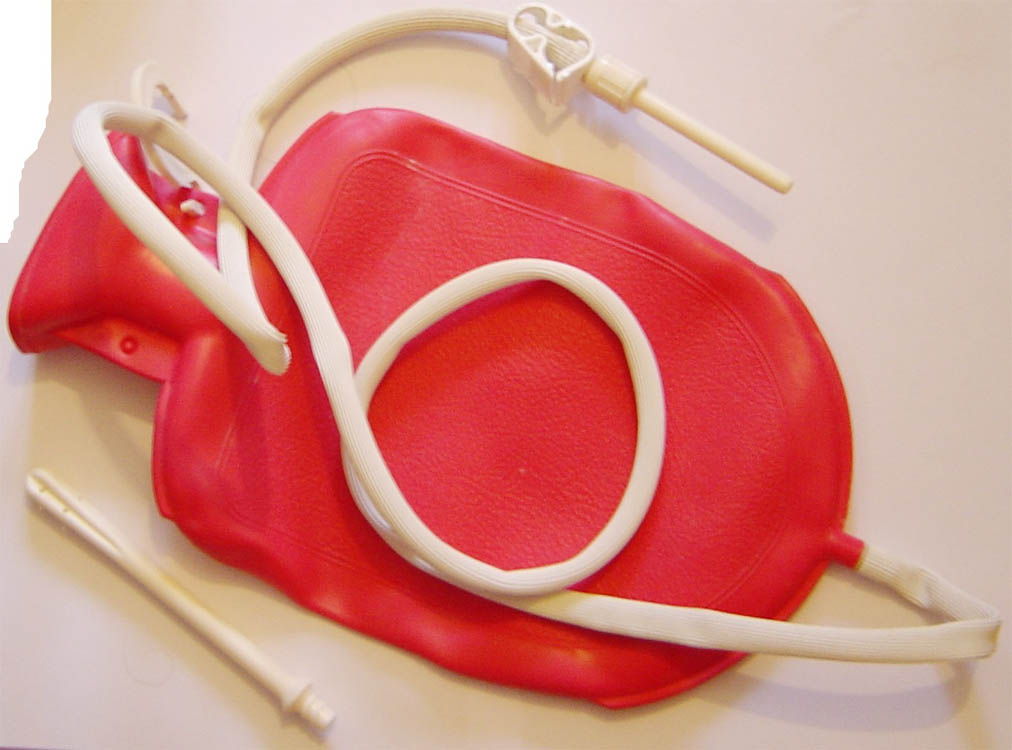
Enema - labor induction
Enema is a great way to get the labor started. Natural stimulation of labor takes place in the following way - an enema is poured with water, the temperature of which should be + 20-25 degrees.
Stimulation of the intestinal walls is transmitted to the walls of the uterus, and it thereby causes the onset of labor. But remember that at home it is dangerous to do so, as transient births can occur.
Castor oil works the same way. But remember that both of these methods can be used only in the hospital, under the supervision of a physician.
In special cases, castor oil in a volume of 100 ml with orange juice in the same proportion can be prescribed.
The taste and smell of castor oil causes a strong emetic activity and leads to intestinal upset. And thus cause spasms of the intestines, which are transmitted to the uterus. And start the process of labor.
But remember that the two methods described above are applicable only in a hospital and under the strict supervision of a doctor! It is dangerous to make them at home by yourself!
To increase the elasticity of the uterus, be sure to eat 3 tablespoons olive oilas it gives a laxative effect, which means it trains the uterus.
No matter how strange it may sound, but constant conversations with your baby in the womb also stimulate generic activity. Tell your baby how you are waiting for him, how you are ready to love him. Very often, such conversations work positively. And the baby begins to seek to leave his secluded refuge.
In Russia and abroad, the stimulation of childbirth, occurs through the use of tincture of raspberry leaves. This decoction tones up the muscles of the uterus, as well as the organs of the small pelvis. And this in turn leads to the beginning of the generic process.
In addition to decoctions and oils, homeopathy is also common today. But remember that the independent use of drugs is not acceptable. Obligatory consultation of an obstetrician-gynecologist. And such drugs should be prescribed only by a doctor. Also, it should produce control over the effect on your body, and the body of your baby.
At the moment, homeopathic medicines are considered the safest, as they do not pose a threat to life for you and your baby. ![]()
In the East, popular practices acupuncture. With it, needles are used, as well as for conception, and for carrying pregnancy. There is acupuncture and to accelerate the process of childbirth. Some techniques are aimed precisely at increasing the number and frequency of already started bouts.
Whichever method of stimulating labor you choose, remember that the use of herbs or medications is possible only with the permission of the doctor and under his constant supervision in the hospital. Remember that your life and the life of your child depend on it. And any printed or online material is just a list of tips. Make a final recommendation and make an accurate diagnosis, can only a doctor.
Take care of yourself and your kids.